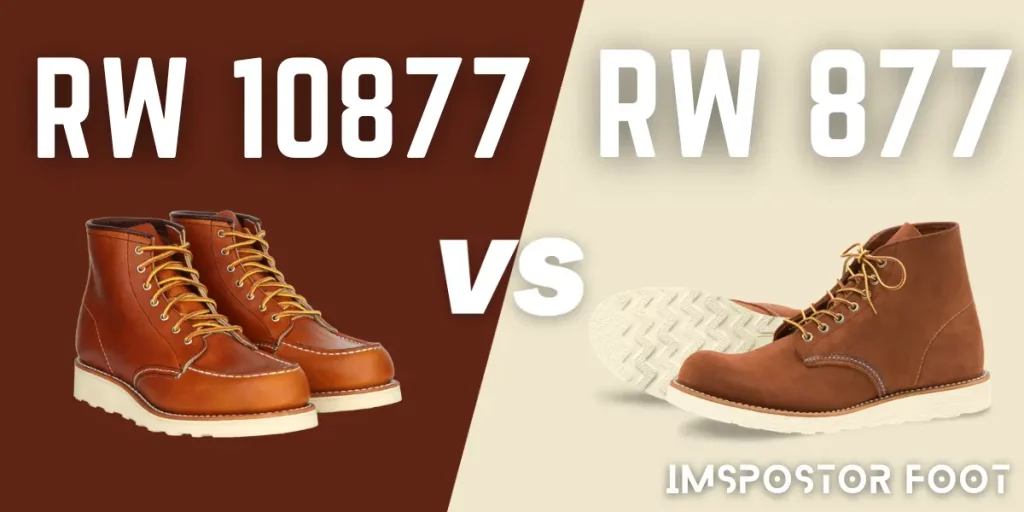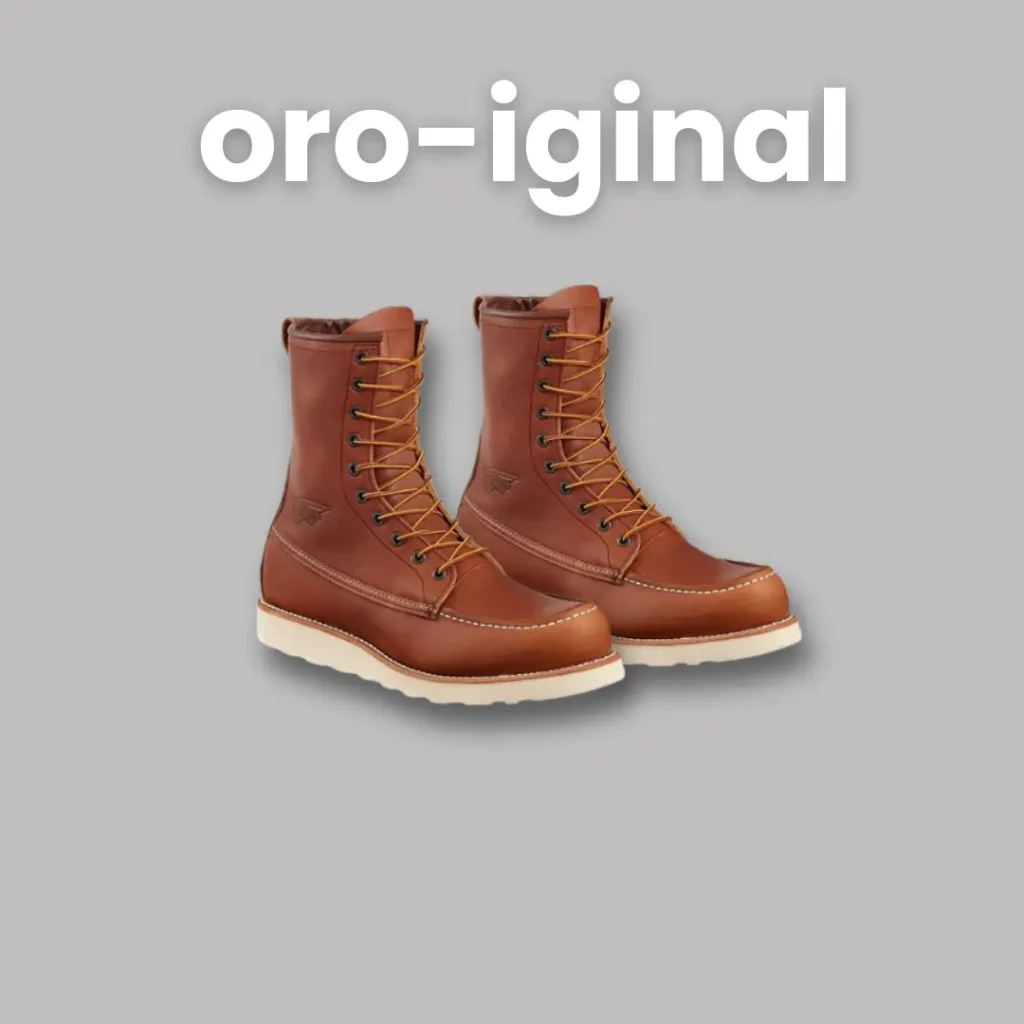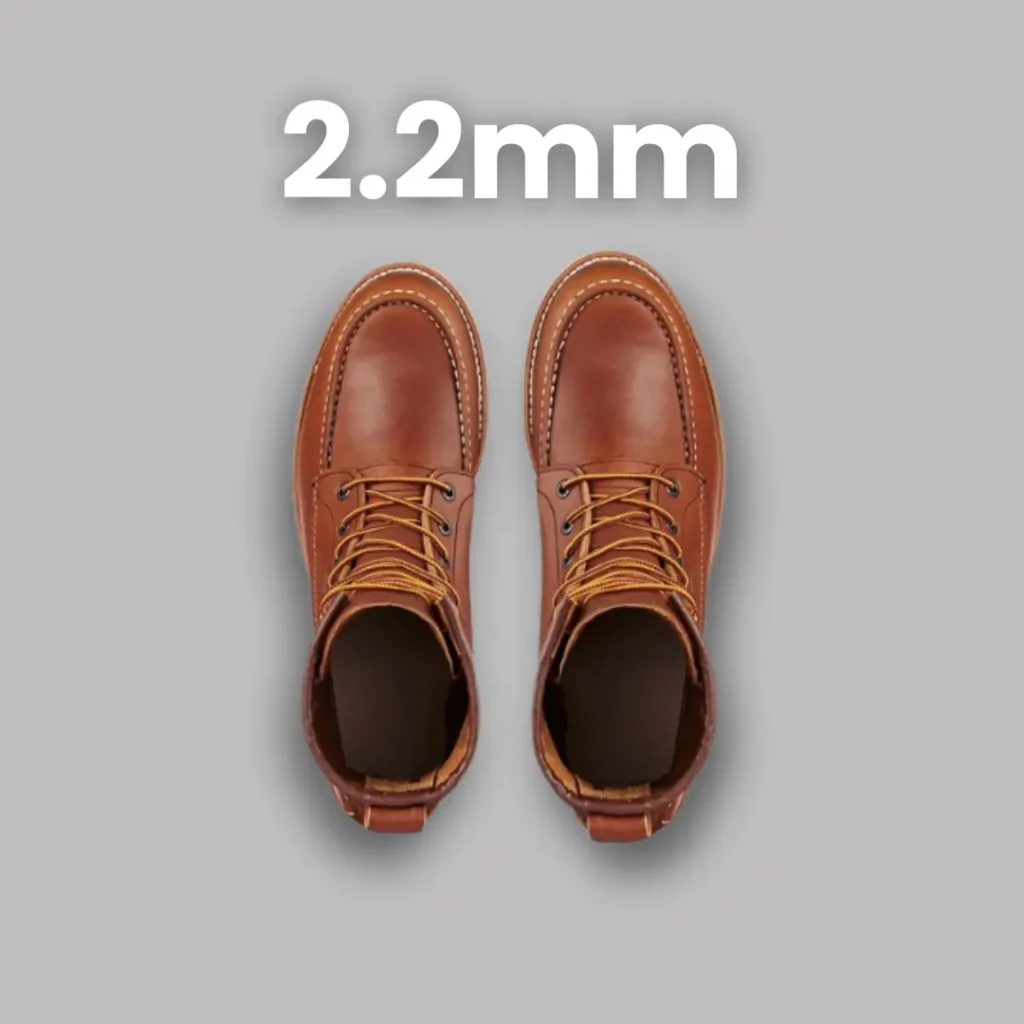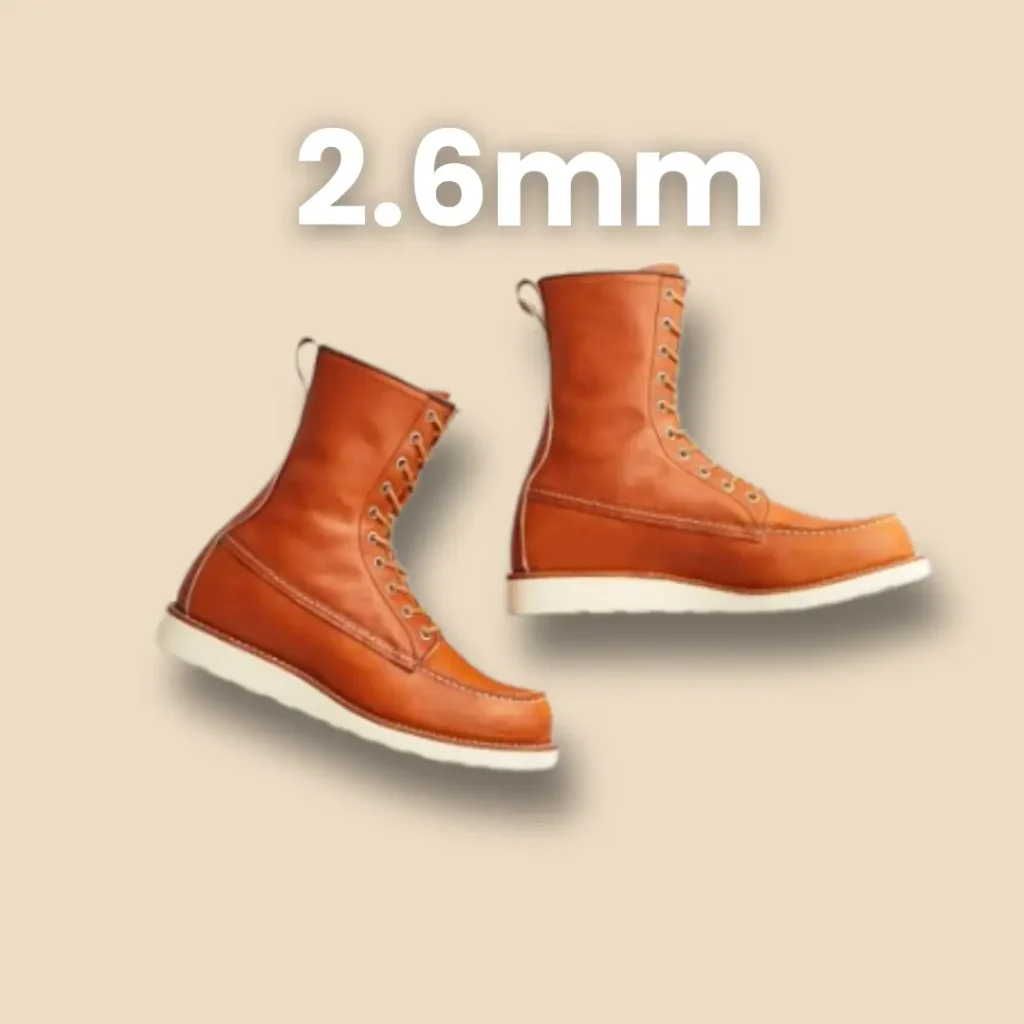
It’s interesting to see how many folks are big fans of Red Wing boots. The ongoing debate between the Red Wing 10877 and 877 is quite a thing. These two pairs are like twins, and it’s a real challenge for people trying to decide which one to snag and which one to pass on.
So, today, my discussion is going to be Red Wing 10877 vs 877, comparing them side-side by side and finding out the best of them.
Contents
Red Wing 10877 vs 877 – A Detailed Comparison
Before I get into the comparison, I’ll let you know that the Red Wing 10877 and 877 models belong to two different lines. The 877 is part of the heritage line, while the 10877 is from the workboot line.
Both of these boots share many characteristics in common, but they differ in terms of comfort, durability, leather thickness, and material use. Here’s a table where I see them different:
| Characteristics | Red Wing 10877 | Red Wing 877 |
| Materials | Oro-ginial Leather | Oro-legacy Leather |
| Comfort | More comfortable | Less comfortable |
| Eyelets | Brass | Nickel |
| Leather thickness | 2.2mm | 2.6mm |
| Durability | More durable | Less Durable |
| Weight | 3.8 lbs | 3.3 lbs |
| Pricing | $329.99 USD | $339.99 USD |
So after checking them, it’s time to assess both of these boots.
Materials


The materials for both of these boots differ slightly; I’ll explain to you how.
First, let’s talk about the uppers on both. On the Red Wing 10877, you get oro-iginal leather, which gives off more of a brown tint. This leather is more focused on being durable, as it’s a workline boot.
The Red Wing 877, however, is designed with oro-legacy leather. It’s an oil-tanned full-grain leather that is known for its ability to develop a unique patina over time.
Oro-legacy is a bit better in quality than the oro-iginal leather, and it’s also heavier. You’ll easily get my point just by looking at both of these leathers.
Next come the soles, and both come with a leather insole and a rubber midsole. The rubber midsole makes them good for impact absorption.
For the outsole, the 877 line has a Traction Tred outsole, and the 10877 has a Traction Tred Cushion Crepe Wedge outsole. The Traction Tred Cushion Crepe outsole does a better job of providing comfort.
So, both materials are good and there’s a tie.
Comfort
Both shoes are really comfortable. They are almost the same and when I wear them, it’s sometimes very hard to make a difference. Here’s what I’ve experienced personally.
For daily wear, I love the Red Wing 877. The thicker leather takes time to break in, but it’s worth it for its rugged durability. Also, there’s a gusseted tongue which works best against challenging weather conditions such as snow or rain.
However, if I know I’ll be on my feet for a long time or doing some serious work, I’d pick 10877 boots. They’re super comfy right out of the box, with stretchy and thin leather. The flat-bottomed sole and slip-resistant feature make them perfect for those busy days. It’s not just about the work; it’s about having boots that feel like they’ve got your back.
Comparatively, the Red Wing 877 is comfortable for harsh weather, but it’s not the best for heavy work. On the other hand, the 10877 prioritizes instant comfort, making it a better choice for demanding tasks.
I say, the 10877 wins here.
Related: Blundstone 550 vs 585
Eyelets and Laces
There’s a minor difference in eyelets and laces too. Let me break it down for you.
Eyelets: On Red Wing 10877, there are black anodized brass eyelets with the Red Wings stamp, while the 877 goes for the simple vibe with white nickel eyelets—no stamps, just cool simplicity.
Laces: For laces, the 10877 has 48 Inch, thick, burgundy and yellow laces that can handle heavy-duty stuff, while the 877 flaunts thinner, stylish orange and yellow laces with up to a length of 63 Inches.
10877 wins here again.
Leather Thickness


Now I know some folks often wonder about how thick the leather is, just to get a sense of how tough and flexible the boots are.
The Red Wing 877 leather measures around 2.6 mm. This is due to its reputation for strength and durability.
On the flip side, the Red Wing 10877 leather measures approximately 2.2 mm. This helps the boots be more flexible, making them better for the work environment.
The 877 takes the lead in leather thickness.
Durability
When it comes to durability, both shoes excel but in different ways.
The 877 looks a lot like the early Red Wing boots made for hunting. They’re tough with thick leather and can handle rain or snow because they’re water-resistant and have a special tongue.
The 10877 model is made for folks who spend a lot of time on their feet, like ironworkers and carpenters. They’re softer, more flexible, and have thinner leather on the outside. They’re water-resistant and hold up pretty well.
In general, the 10877 is tougher against the work environment and more durable compared to the 877.
10877 wins the durability factor.
Fit and Sizing
Fit and sizing are the most important aspects that you need to understand.
The 10877 is available in sizes 6 to 15 and widths from double-A to H. Similarly, the 877 is offered in sizes 6 and a half to 14, but it only comes in a D width.
For many Red Wing shoes, it’s better to go one size down from your true size since they are designed to be spacious. To prevent any discomfort, I suggest you get these boots in full size or a half size down, depending on your preference.
Personally, I went for a half size down, getting a 9.5 size instead of my original 10, and it worked well for me. I say it’s a tie here, as both of these fit well enough.
Work Rating
The 10877 is classified as a workwear boot that meets safety standards (ASTM F2892-18). This classification indicates it fulfills performance requirements for soft-toe protective footwear.
So, it’s suitable for ironworkers, carpenters, and those in high-activity environments; its flat-bottomed sole provides excellent stability and sure footing, making it best for people who spend more time on their feet.
The 877 might not have safety standards, and it must be used with high care or you’ll damage the boot. For the Red Wing 877 model, manufacturers provide specific care guidelines to ensure its longevity and optimal performance.
So, 877 can’t beat 10877 in terms of work-rating. So 10877 takes the win here.
Pricing
Both the Red Wing 10877 and 877 boots are closely priced, with just a $10 difference between them.
The Red Wing 10877 is priced at $329.99 USD, and the 877 is priced at $339.99 USD. The 877 is a bit more expensive, likely because it has better materials and higher durability.
For me, the 877 is the perfect choice. The oro-legacy leather and more durable design make it my favorite.
But as the price of 10877 is more budget-friendly, it wins here.
Which One Is Best for Running? Red Wing 10877 or 877?
I’ve mentioned so many times that the Red Wing 10877 is known for its robust construction and weight. So I won’t recommend it for running due to its lack of extra cushioning.
And the same goes for the Red Wing 877, which, although comfortable for daily wear, isn’t intended for high-impact activities. Despite its crepe rubber sole, it doesn’t offer sufficient shock absorption, potentially reducing the lifespan of the boots.
Therefore, neither of these is ideal for running.
Which One Is Best for Walking? Red Wing 10877 or 877?
Both boots are great for extended walks, whether for work or for fun. The cushioned footbed of the Red Wing 877 gives a comfortable feel, ideal for casual strolls.
But on the Red Wing 10877, you get this thinner build, which overall provides good motion control for long-distance walking. That’s why, for me, Red Wing 10877 does a pretty nice job for normal walks.
Final Thought: Which One Should You Buy?
If you’ve been following along, you might already know which one you prefer. If you’re still unsure and looking for my final words, I’d say the choice to buy depends on you, the buyer.
Overall, these boots share common features, like the fact that they both are designed with the same Red Wing’s iconic moc toe style, are crafted from full grain oiled leather, and are proudly made in the USA. They both come with a traction tread outsole and a leather insole. Along with that, they offer a Goodyear welt formation, which means they are resoleable again and can last for several years.
To wrap it up, if you’re on your feet a lot, go for the 10877. For those seeking tough and rugged casuals for daily wear, the 877 is the way to go.
Now, let me know what you think about my suggestion, and comment down below what you like about these boots.




